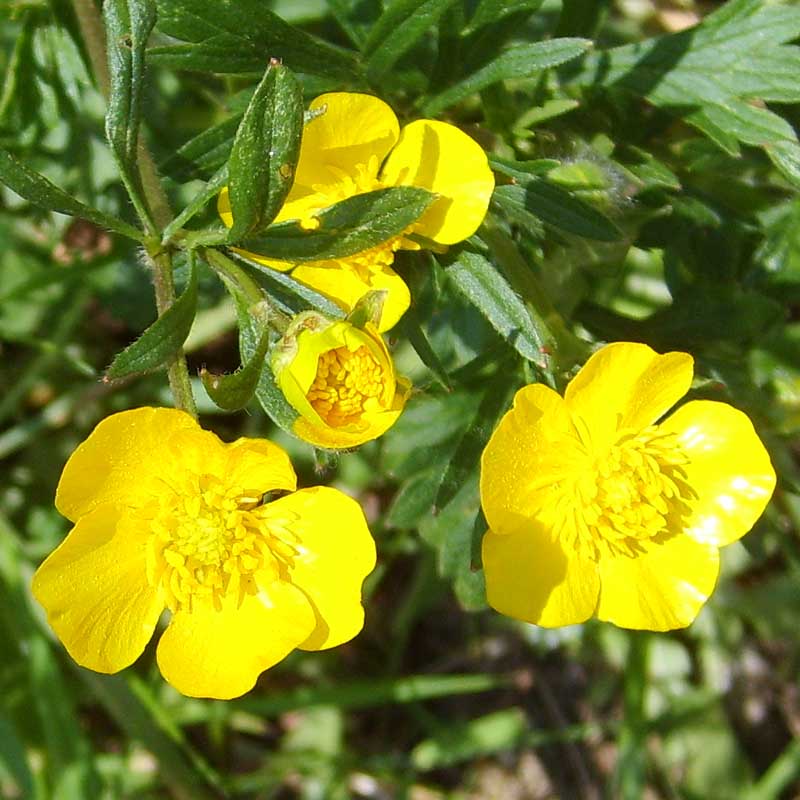Buttercup Flower (Ranunculus)
There is not just one buttercup flower species. Ranunculus is a large genus of the Ranunculaceae (buttercup family) and there are about 400 different Ranunculus species.

These pretty little flowers usually bloom in April and May, but they may bloom all summer when right conditions are available. The flowers of the wild buttercups species are mostly yellow, some are white and a few are orange. There is also a variety buttercup hybrids (persian buttercup) that come in all kinds of colours.
Ranunculus is Latin and means little frog. This genus is named like this because some species like to grow at or in the water (e.g. marsh marigold flower, swamp buttercup and water buttercup).
All species are poisonous and may be harmful for grassing animals. You should be careful if you like to pick buttercups not to touch your eyes or lips. This can cause bad and uncomfortable inflammations (I know from my own experience!).
Growing Buttercups Flowers
From Roots:
1. Choose a sunny/half-shady location
2. Soak the roots for a couple of hours in water
3. Place the roots in the earth about 5 cm deep
4. Keep the soil moist (but avoid water logging)
5. Give the grown plants liquid fertilizer on a regular basis
From Seeds:
1. Place them in flats in the spring and cover them lightly
2. Put the flat in a plastic bag
3. Place the flat in the fridge for three weeks
4. Remove the flat from the fridge and the plastic bag and place it in a shady place in your garden and cover with glass (germination time is three weeks to three months)
5. Once the seeds have sprouted you can plant them in your preferred location
You can propagate buttercups by division in spring or fall if you would like to grow more buttercups.
Enjoy!
Return from Buttercup Flower to Homepage
Check Out Other Flowers:
Columbine Flowers
Geraniums
Pelargoniums
Forsythias
Chionodoxa Luciliae (Glory of the Snow)
Crocus Flowers
Daffodil Flowers
Daisy Flowers
Grape Hyacinths
Hyacinth Flowers
Marigold Flowers
Morning Glory Flowers
Night Blooming Flowers
Pansy Flowers
Peony Flowers
Poppy Flowers
Primrose Flowers
Scilla Siberica (Siberain Squill)
False Rose of Jericho (Selaginella lepidophylla)
True Rose of Jericho (Anastatica hierochuntica)
Snowdrop Flowers
Spring Snowflakes
Tulip Flowers
Winter Aconites